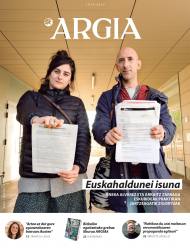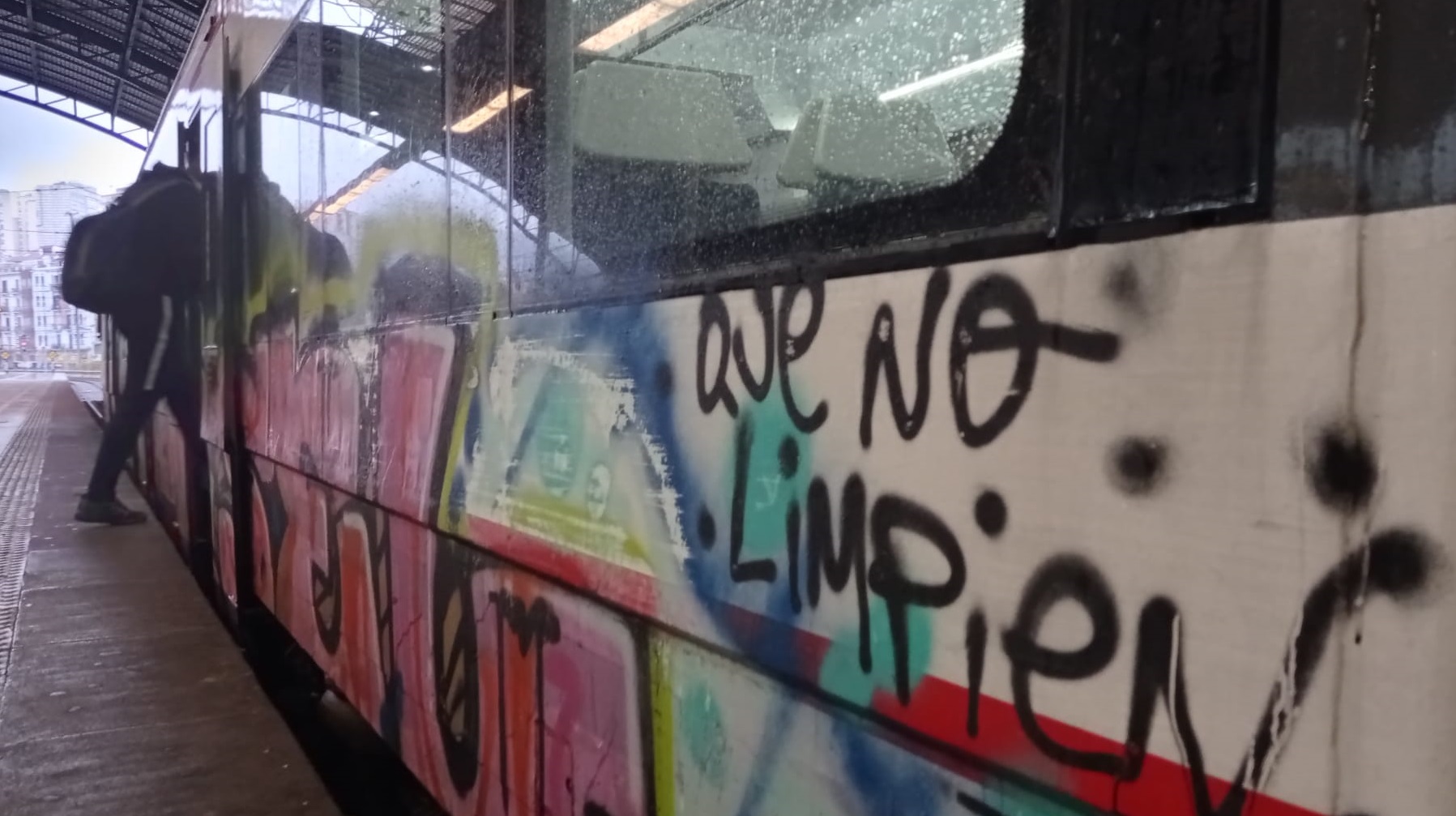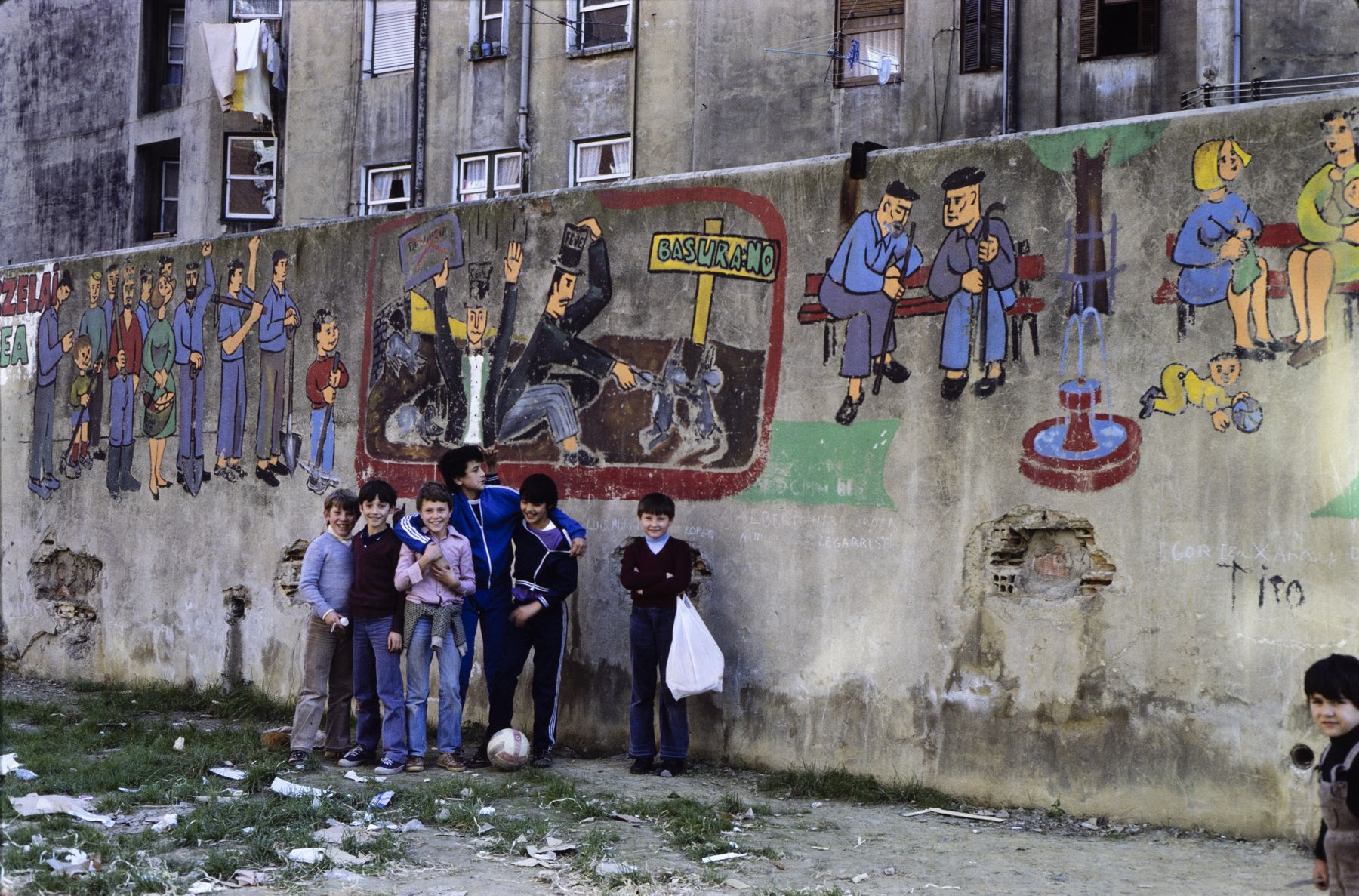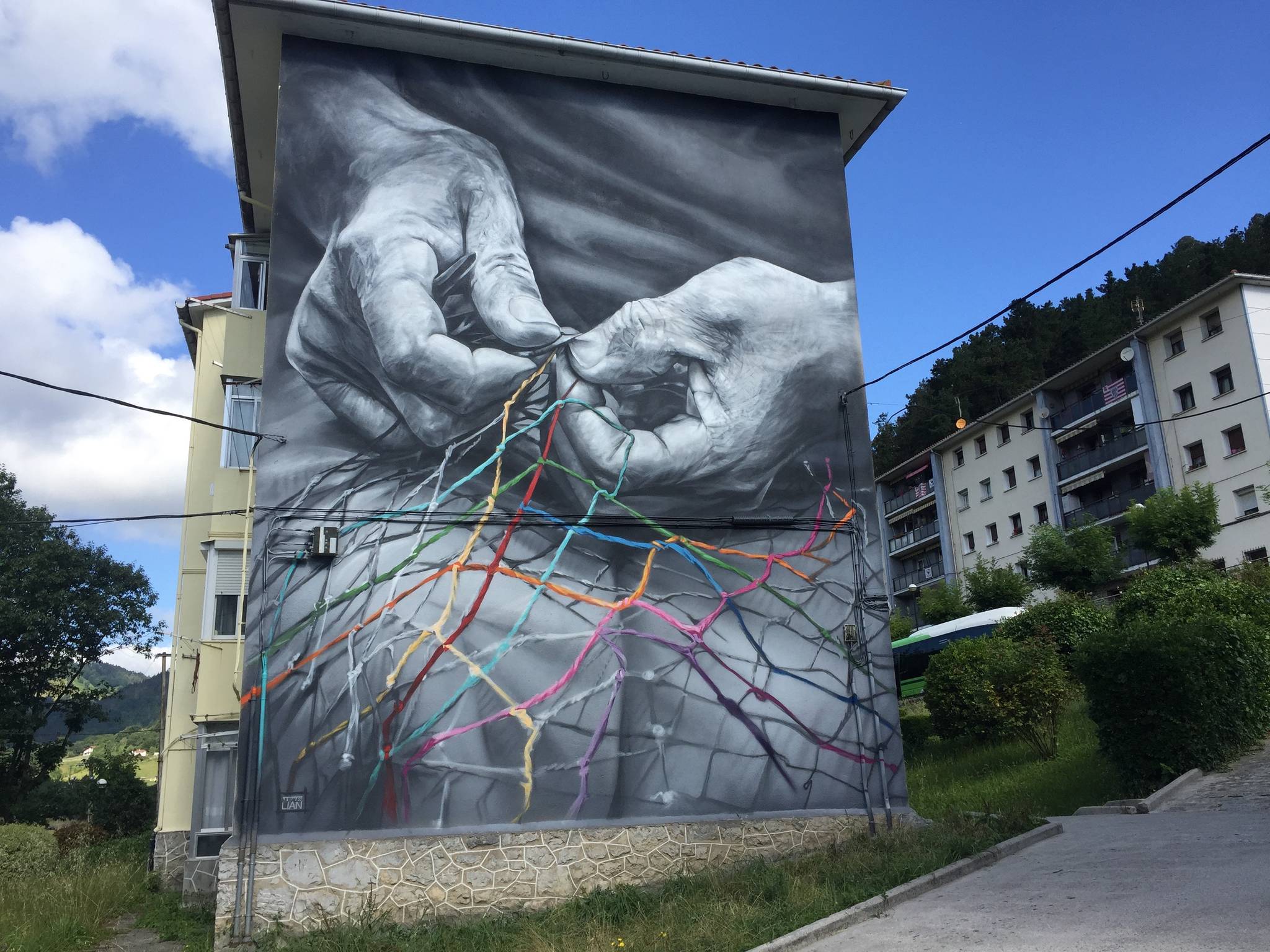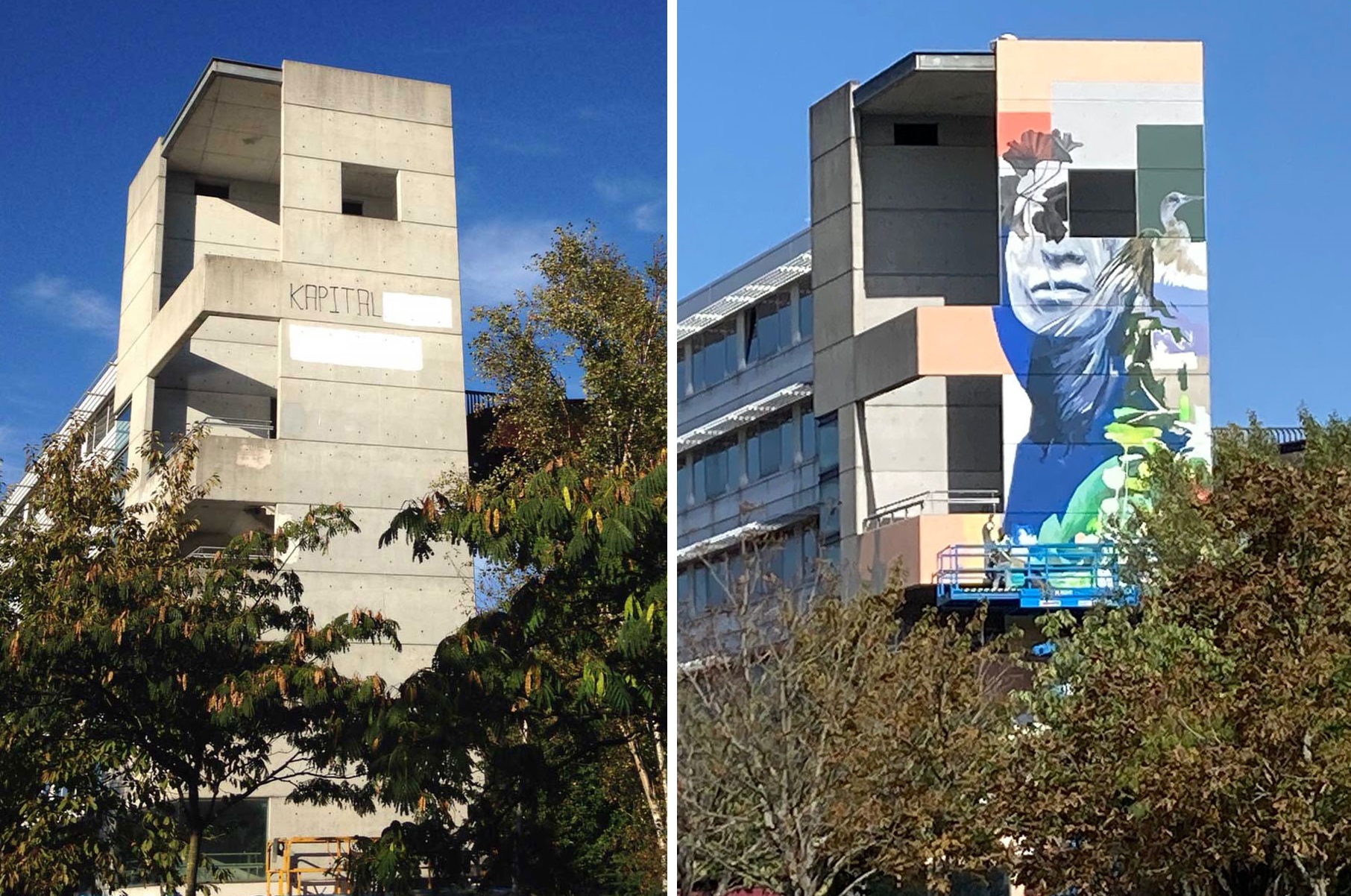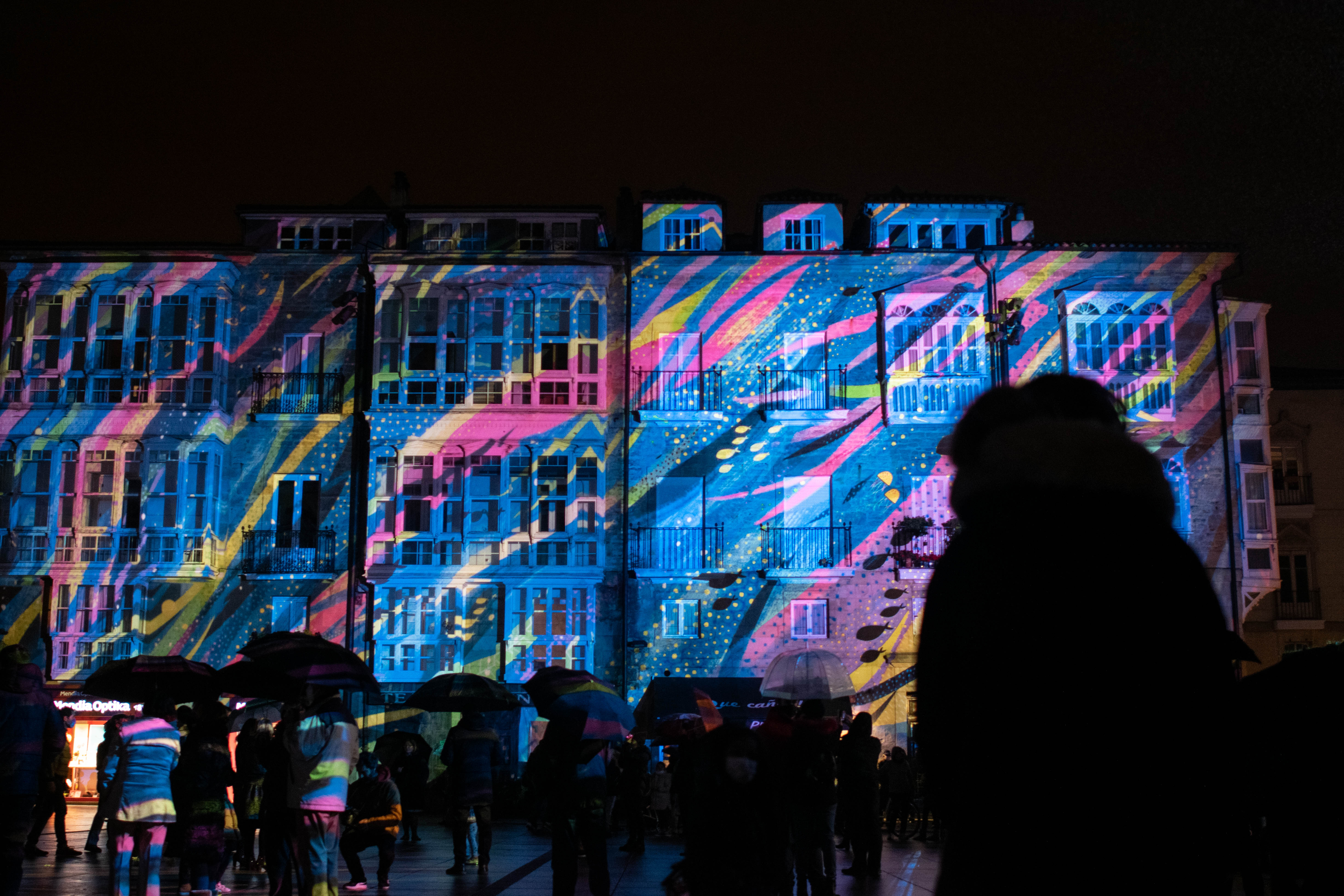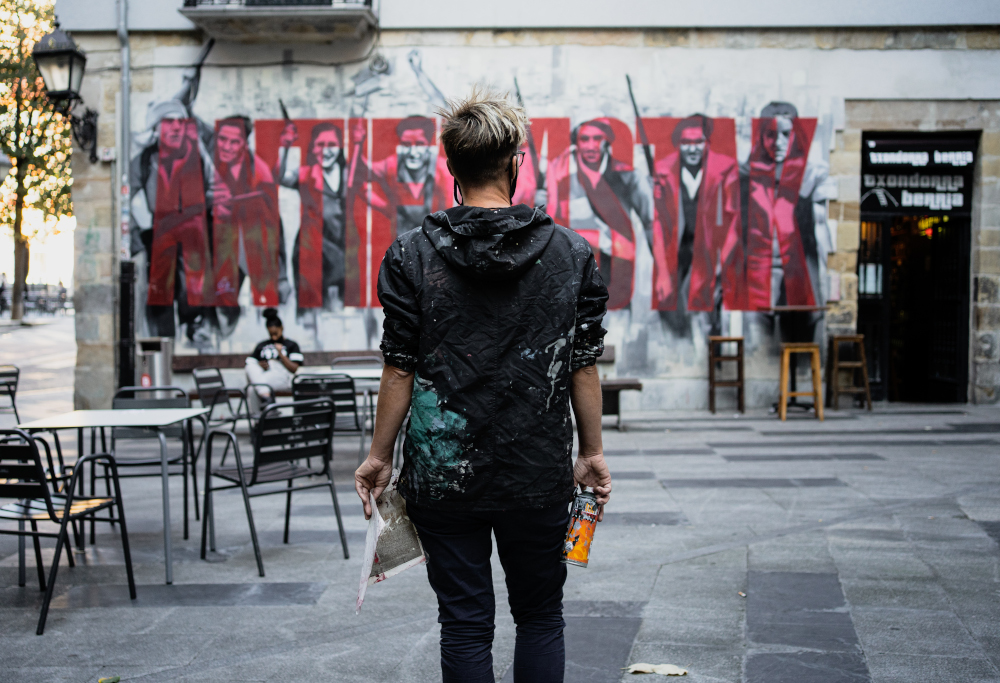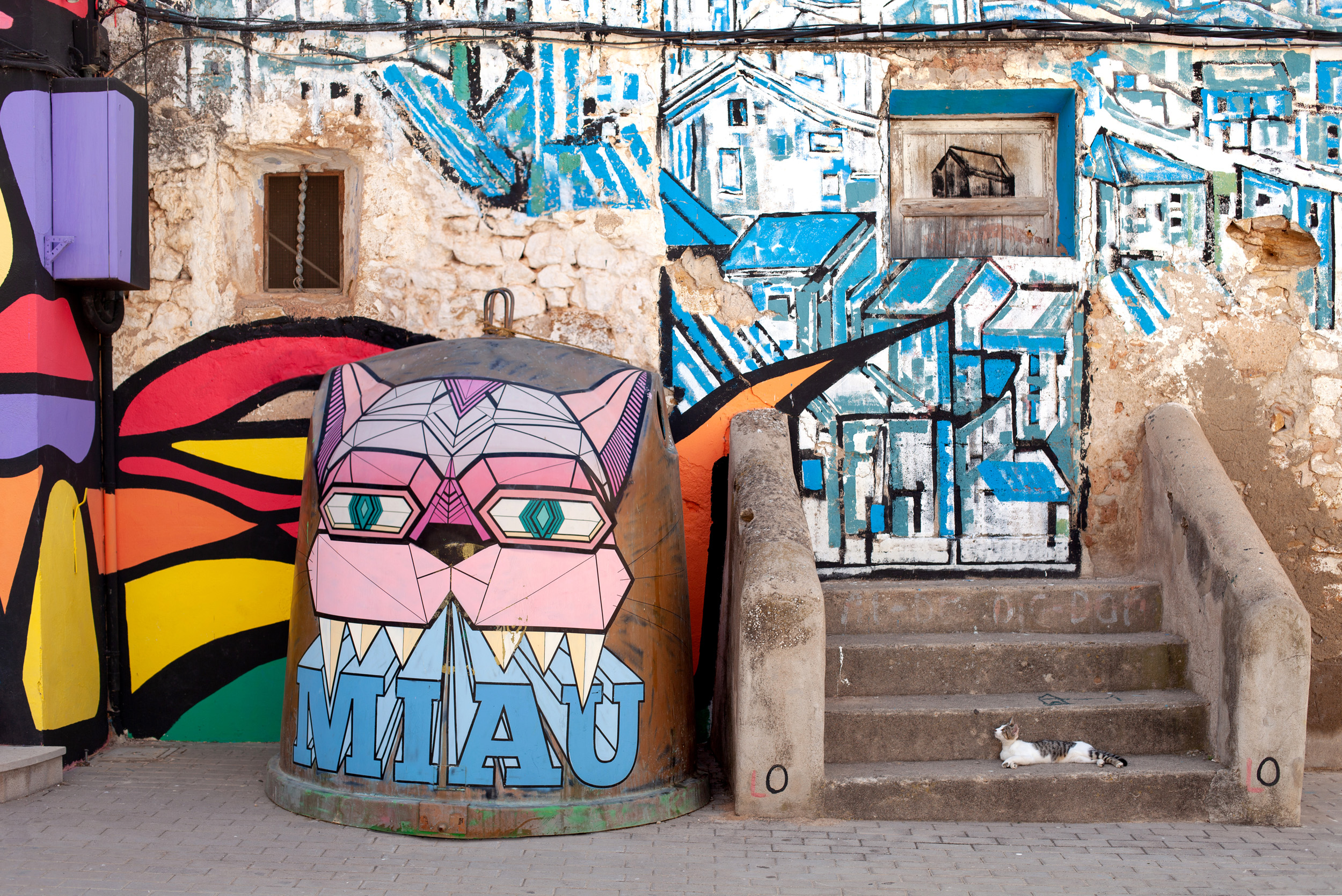"We live in a world of images, but that art depends on advertising."
- Irantzu Lekue has made a hole in the new names of our art. Despite his youth, he has made a journey of great heights, worthy of consideration right now, and he has grown in the greatest that the future will bring us. We have talked to the artivista when it comes to receiving an exhibition.
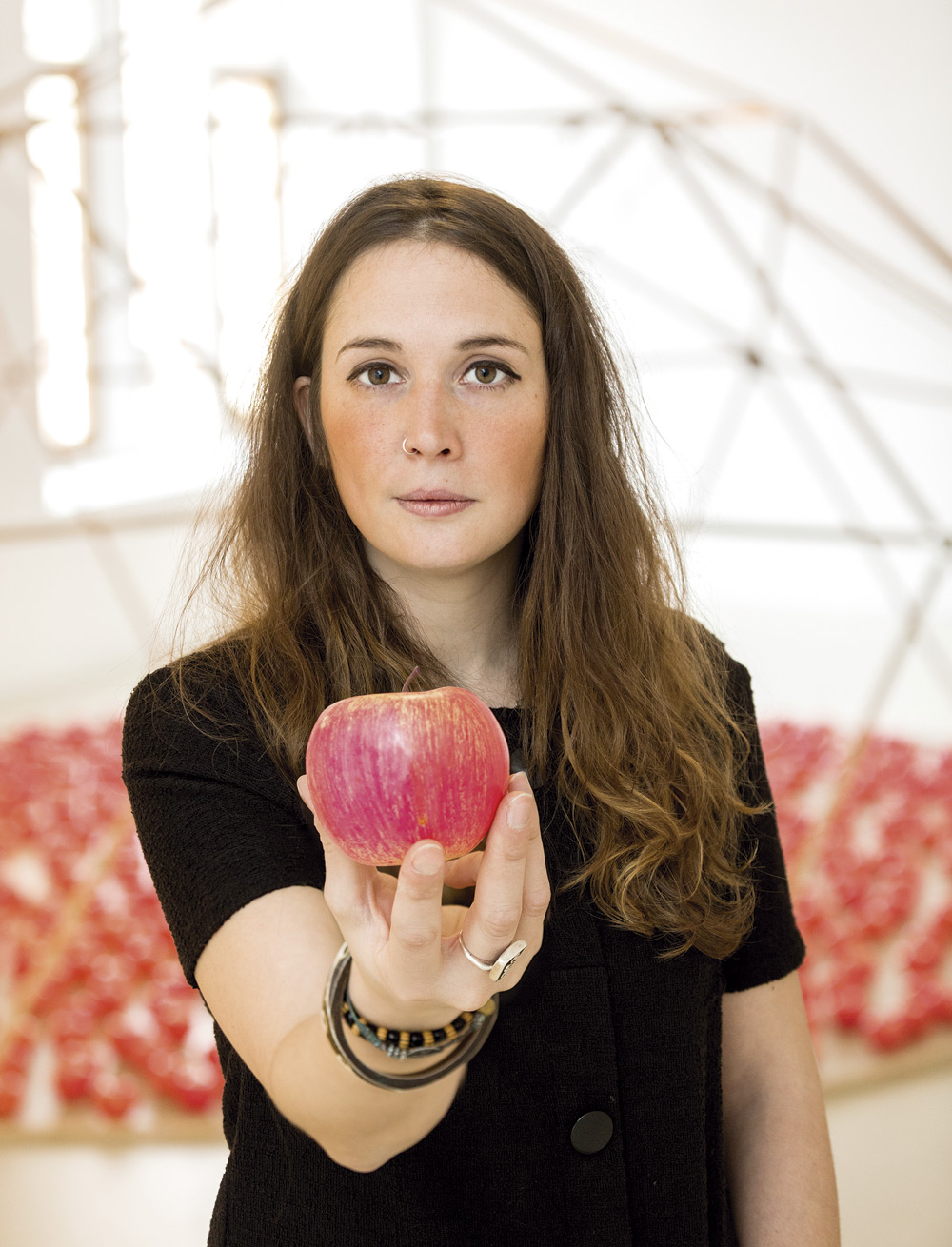
Artista multidiziplinarra. Margolanak, argazkiak, bideoarte lanak nahiz instalazio artistikoak lantzen ditu. Artibismoa du ezaugarri, salaketa oinarri. Sari garrantzi handikoak irabaziak ditu, eta esaterako, horien artean dira Santander Fundazioaren Videotalentos Saria, Canal Fundazioaren Argazki Memoriak Saria, eta 2016ko Welcome Donostia. Iralekue.com-en ageri dira artibista honek egindako hainbat lan. ARTgia Sorgunean ari da gaur egun, zenbait lagunekin batera.
At what time are you?
I have a lot of work on my hands, and I think I'm in a good time. In Vitoria-Gasteiz, ARTgia Sorgunea has not opened the old one, and we have already planned seventeen exhibitions. In addition, conferences, performances, presentations... There's movement. As for my work, I've had the opportunity to show my works of art here and there, and I'm also making murals. A good time.
We've seen you the latest #FemRights exhibition at the Oihaneder Palace in Vitoria-Gasteiz. What body usually opens and closes the exposure with?
When I open, I have excitement and nervousness, both of them. I'm worried about how the viewer is going to get. To let people understand the work that I have done from within. In fact, throughout history, people have struggled to understand art, live far from the representation of art. For example, in the #FemRights exhibition we put explanatory texts together with works of art to help them understand them. However, I find it interesting that people make their own interpretation, that everyone draws their own conclusions, which is the goal of art, that they make them think. Interpretations of people often complement the work of art. The artist may do the work for a certain purpose, while the viewer can see it differently. It's interesting.
And when you close the exhibition, what does your interior say?
On the one hand, it makes me sad. However, after I've been exposing the exposure at a given place for more than a month, I'm starting to think about somewhere else. And, of course, wanting to create new jobs! At ARTgia Sorgunea, for example, we have a lot of projects in hand, especially in the mural painting sector. For example, we are now working at Zalla on a participatory project. We are producing a mural about the history of Aranguren that links women and industry. Topics related to my work, both. So, to taste.
He has promoted his participation in different murals: In Murgia, in the fronton Jai Alai of Zuia, in Ubide, or in the West Institute of Vitoria-Gasteiz.
Yes. In fact, participation implies, among other things, that the participant has done the work. On the other hand, through participation, we tend to reflect what people want to express. The participation of people in the creative process of the work seems to me to be an enriching way of understanding art. Collaboration enriches us all.
When you make one of these great murals, how do people get involved? Go up to the scaffold and paint?
Ha, ha… No, not just painting. In Zalla, for example, also in the conception of work. I'm not from Zalla or Aranguren, I don't have any news from there. Those who live there know the people and the history of the people. Without your competition, my point of view would have been that of a stranger, that of a visitor. We usually hold meetings to encourage participation. The first presents ideas and themes. In the second, we collect images based on the ideas or we start composing to start guessing how the specified ideas and themes would appear on the wall, so I offer the Croquis citizenship of the wall and I start sketching both the images and the colors.
Last year you had a project to paint a mural on Gasteiz Avenue. In autumn, the College of Architects of Álava opposed its intention, pressed here and there, even through social networks. Finally, you refused to carry out the project.
I'll tell you what things have been like. In 2017, the City of Vitoria-Gasteiz convened a public competition. Until then, the murals were awarded directly. According to the call two years ago, three projects were called and all three of us won them. Public competition. However, due to a number of administrative circumstances, we had to give up two projects and move forward with one, the Ongi etorri.
We studied several walls in the city, one by the eyes, we agreed with the community of the building, we signed the contract to make the mural, we rented the material... and then the representatives of the College of Architects opposed it on the front page of an Alavese newspaper and for three days spread the worst that had occurred to them. What’s more, they talked to the building’s neighbors that we wanted to paint the mural, they were scared… It didn’t make sense to do so and we refused to paint the mural.
I would say that what the architects did was not serious, that they expressed themselves in the press. It is neither serious nor dignified. The paralysis of the project awarded by public tender through El Correo y Vocento is absolutely inadequate. They spoke on behalf of the college, but several members of the college approached us to show their solidarity and denounce the forms that have been used in the college.
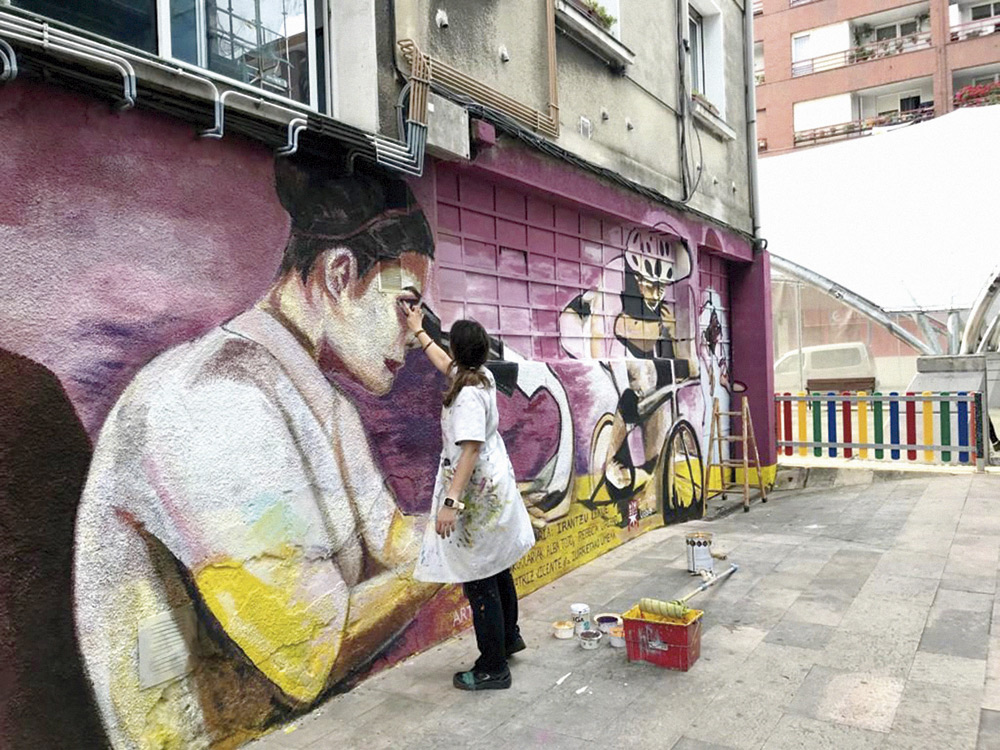
You say that the neighbours were frightened.
They voted twice. In the first one, the eleven voted yes, and the only one who said no. In the second, eight yes and six no. Despite the refusal to make the mural in this building of Gasteiz Avenue, the project has not been discarded. We will click on the ikastola of the San Martin district.
The gender perspective is completely present in their work.
Yes. For example, in the #FemRights exhibition I referred to social rights and, above all, women’s rights. There I worked on the invisibility of women, stereotypes, empowerment and mutilations they have received in all cultures… I remember that when I studied at university I also studied mistreatment. At that time, I took advantage of painting. In recent years, I have focused on deepening the gender, taking into account the perspective given to me by the people I have suffered in my life. I will also work on issues other than women, of course, but from the point of view of women.
What is artivism? One of the words that define the art that you do.
What is artivism? Activism through art! Ajajajajajajajajajajajajajajajajajajajajajajajajajajajajajajajajajajajajajajajajajajajajajajajajajajajajajajajajajajajajajajajajajajajajajajajajajajajajajajajaajajajajajajajajajajajajajajajajajajajajajajajajajajajajajajajajajajajajajajajajajajajajajajajajajajajajajajajajajajajajajajajajajajajajajajajajajajajajajajajajajajajajajajajajajajajajajajajajajajajajajajajajajajajajajajajajajajajajajajajajajajajajajajajajajajajajajajajajajajajajajajajajajajajajajajajajajajajajajajajajajajajajajajajajajajajajajajajajajajajajajajajajajajajajajajajajajajajajajajajajajajajajajajajajajajajajajajajajajajaj
And accessible art?
Art visible not only through the eyes, but also by the other senses, whether by touch, smell or ear. The welcome mural, for example, was going to be audible.
You make contemporary art and practice disciplines that are and are not: video, painting, facilities, sculpture…
Today, all disciplines are confused. There are artists working in a single discipline. To me, on the contrary, playing with different means gives me a lot of possibilities. I find that interesting. As I studied, I traveled from one town to another and had the opportunity to work in a number of disciplines. Everything is invented, many new things have emerged, especially in the era of the avant-garde, where they were born and recreated, and today we have to play with the inventories. And yet, always working to create new things on a continuous basis.
"It is absolutely inappropriate that the art project awarded by public competition aims to be paralyzed with 'El Correo' and Vocento"
You are 31 years old, you have a very rich resume, an exhibition, another installation and a space of creation… How long can you follow that crazy rhythm?
It is not an easy question to answer! I have worked and worked last year, also on weekends. It was exhausting. The workload is a personal cost. I took a short break at the end of the year, to resume the march with great enthusiasm. But -- I'm exhausted.
Inside your artivism, you painted rangolia in Vitoria, at the door of the Krea Contemporary Expression building. I didn't know what it was about. I had to check in the dictionary.
A mandala. In India, they call it "rangoli." I spent eight years abroad, studying, master's and others. I couldn't go back to Vitoria and show my jobs, they were very limited options. As for Krea, it was created to influence the art world, I thought it was a beautiful project. However, it was closed! I filled it with courage and painted a rangolia. After all, the rangoli has a meaning of prosperity in India. When you paint at nobody's door, you want prosperity for them. I did the same thing in Krean: I traversed the fence and I painted a rancid on the ground. I wished my home prosperity.
Kutxabank, the owner of the building, did not accept its prosperity.
No. The agent called them. They took us and expelled us. Not bad that the rancid was painted before they came to throw us. We were painting at seven in the morning and they didn't arrive until noon. We made a very nice rancid. On the other hand, the intervention was full of meaning, as we have used natural pigments. Not in vain, the snow had shattered him. Then I received the complaint, but we formed the SOSKrea platform in the city, and in the end, the complaint was withdrawn. There's the story. Since then, there have been movements, controversies and, as it seems, Krea is going to become a public place. And I'm glad it's a place for people.

The 6000zpt installation also targeted the complaint. At that time (2015) you denounced the “racist” and “exclusionary” politics of the mayor of Vitoria-Gasteiz, Maroto, through art.
For me, art is a medium I have inside, which I can barely explain in the words, which I think, to show. And when we did the 6000zpt, there was Gora Gasteiz! The Commission's proposal for a Council directive on the approximation of the laws of the Member States relating to the approximation of the laws of the Member States relating to the classification, packaging and labelling of dangerous substances. In that dynamic, colorful movement, it occurred to me to do something with the shoes. After all, we calm down every day, they are also our reflection. We spent a month picking up the shoes and eventually set up the installation. It's pretty. Anyway, that assembly didn't fit the goal that I had in mind, because I wanted people to take shoes and form shapes, to play. However, it served to transfer poverty to the city center, the most emblematic plaza in Vitoria-Gasteiz. While those who have money were drinking coffee, the poor were spending their time trying their shoes. It was a powerful image.
What do the awards bring you?
The art world is very difficult. We are very self-critical, out of fear of showing our work, we live in uncertainty... Receiving a prize is a recognition and, with it, a dose of confidence to continue in your work. Despite being presented to different awards and competitions, we do not receive nor remain finalists. From time to time, we receive a prize and we want to move forward.
I asked you when you are at the beginning of the interview. And in the future, what path would you like to take?
I would like to show my jobs abroad. I see a development between me, I know I haven't reached the goal, and I'd like to keep playing new artworks.
You're making news!
More recent, then! Ha ha ha! I'd also like to encourage people. We live in a world of images, but consumption and advertising depend, above all, on this art. For the rest, I don't see art as part of our daily lives, and I would like art to be available to people, to be available to everyone. There are times when it has not existed for anyone but for the elites, and that must be broken.
“Kanpoan eman nituen zortzi urteetan euskara galtzera iritsi nintzen. Ez nintzen hitz egiteko gauza. Beldurra ematen zidan. Itzuli nintzenean, berreskuratzeari ekin nion, eta lortu dut. Euskarazko lanak sortzeko gai naiz orain. Euskara gure kultura errebindikatzeko modua dela iruditzen zait”.
“Diruak eta botereak agintzen duten garaian, kontsumoa zorion osagaia den honetan, artea eta kultura beste esparru batzuen atzean geratu diren honetan, zentzuari deiadar egin nahi diot. Artea ezinbestekoa da gure bizitzan: sortzaile izatera, aukera ezberdinak bilatzera eta arazo eta dilemak askatzera bultzatzen gaitu; pentsatzera, ikertzera, kezkak planteatzera eta, aldi berean, hauek askatzera”. (‘6000zpt’ instalazio artistikoaren aurkezpenetik hartua).
Zerbitzu sekretuen alorrean erabili ohi diren OSINT teknikak erabiliko dituen enpresa bat kontratatzeko proiektua lizitaziora atera du Gasteizko Udalak, Arabako Alea-k jakitera eman duenez.
These cold nights of November the street of Vitoria does not illuminate the moons, but the shows of the festival of light Umbra. In these short days of little light, the festival has allowed us to enter the world of the art of light, where the public has been able to experience... [+]









